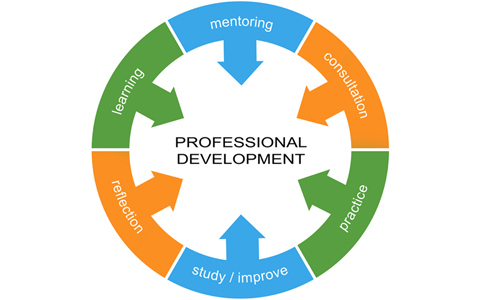A few years ago, employee perks meant that once a month you could ditch your sad cubicle lunch for a tray of lukewarm deli sandwiches catered by the local grocery store. Today the employee perk game is a whole new story.
Now companies are trying to top one another with ever-more outlandish additions to their employee perks — sound-infused nap pods, on-site massages, rides on helicopters and yachts, shooting galleries? Careers pages are beginning to sound more like advertisements for resorts than organizations.
And that’s not necessarily a bad thing. Does the promise of a new iPad or free organic snacks make your company stand out to job seekers? Of course it does. None of us is immune to the shine. However, while food, tech, events, and office space may get talent in the door, it won’t keep them around. For retention, the “perk” your employees really want is professional development.
The Desire to Learn
We’re a learning-centric society. We start school at a young age, are assigned value or lack thereof based on our grades, and are told that success starts with a higher degree. The motivation to learn is both extrinsic (expectations from family/friends, a great job title, praise from a manager) and intrinsic (passion for the industry, a personal sense of accomplishment, a feeling of being in the right fit of a career).
And that motivation is very strong. Gallup found that 87 percent of millennials considered professional development opportunities as important to making a choice of employer. We want to learn, and we want to know that our employer will provide us with the space and resources to make that possible.
The Need to Feel Valued
A study by Deloitte found that 71 percent of employees who said they were likely to leave their employer in the next two years felt that their leadership skills weren’t being fully developed. We all want to feel valued and appreciated. If it seems that our talent is being left untapped or ignored, it starts that slow burn of resentment ending with … “I’ll take my talent elsewhere.”
Employees care about being cared about. They want to know that their manager and company leadership doesn’t see them as another cog in the wheel, but as a valued individual. This starts with recognition for a job well done (69 percent of employees said they would work harder if they received praise), but it doesn’t have to just be about the positive moments.
When managers provide employees with individual opportunities for professional development — invitations to specific trainings or one-on-one goal setting sessions, for example — it shows the employee that his or her value doesn’t go unnoticed. My employer is investing in me. My employer sees my success as tied to their success. Those feelings equate to real results in terms of productivity and long-term loyalty.
The Importance of Seeing a Future
A whopping 93 percent of U.S. adults changed employers the last time they changed roles. This mass employee migration costs businesses millions of dollars in lost knowledge and the resources need to hire and train new talent. In fact, it’s estimated that it costs up to 150 percent of an employee’s salary just to replace him or her.
Among the factors that cause employees to look elsewhere is a lack of opportunity for advancement in their current organization. Research by the Kellogg School of Management showed that it’s not just the promise of a salary bump that makes employees crave promotions, it’s the advancement itself. The same research indicated that a clear path of promotion was critical to employee happiness. When the next rung of the ladder is within reach (if you just work on your stretch), you’re more likely to want to go after it.
The evidence supporting development is clear, but amongst our busy schedules and growing to-do lists, it can be hard to find the time to properly development every employee. The two keys to working it out are to:
First, consider the high ROI of development. Every employee retained is money and knowledge saved. Your team members are your most important asset and should receive even more careful consideration that your products or services.
Second, get support. Employee development no longer has to be a hassle of planning trainings, bringing in guest speakers, and printing worksheets. Learning management software (LMS) automates many development tasks from goal setting to performance reviews to individual employee dashboards that present relevant (and pre-recorded) training opportunities.
With an LMS, you can provide employees with learning opportunities at their own speed, as well as those intrinsic (I have access to topics I’m passionate about!) and extrinsic (My boss sees a report on my exam.) learning motivators. You can also provide recognition for goals completed or stellar performance reviews, even with remote teams. And you can help employees see the path to promotion by setting and tracking goals in the LMS so every employee has anytime, anywhere access to his or her progress.
Chair massages are nice. And there aren’t too many people who’d turn down a break in a nap pod. But none of these perks will ever replace the value of investing in your employees’ development.
——-

Taylor Burke is a contributor for TechnologyAdvice.com covering the intersection of technology and company culture. When she’s not writing, you can find her reading, cooking, running, or hanging with her dog—but rarely all four at once. Connect with her on LinkedIn.







